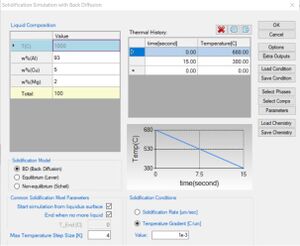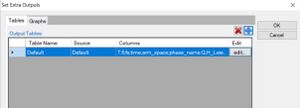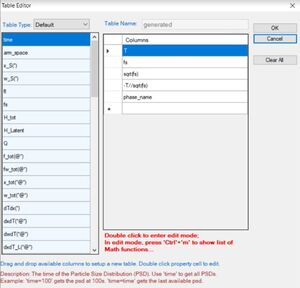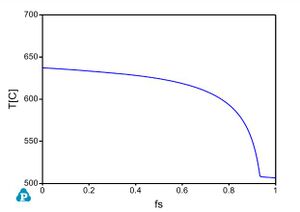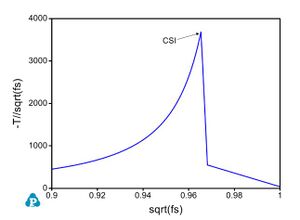Pandat Solidification and Crack Susceptibility (CSI) Simulation
Summary
This SOP provides an example of how to perform a solidification simulation using the Pandat2020 software. Hot tearing or hot cracking is a serious defect occurred during welding and casting solidification. Crackingusually occurs at the end stage of solidification along grain boundaries. Prof Kou proposed a criterion to describe the crack susceptibility by using a crack susceptibility index (CSI). This principle has been applied in several Al alloy systems. An example of the process is described.
Downloading Pandat Software
- Download Pandat2020 installation file from the link http://www.computherm.com/download/Pandat_2020_Setup.exe and run Pandat_2020_Setup.exe to install Pandat 2020 (including all modules) on your computer,
- Download PanEngine2020 from http://www.computherm.com/download/PanEngine_2020.zip to install PanEngine on your computer.
Simulation for alloy solidification curve and hot cracking susceptibility index
Purpose
Hot tearing or hot cracking is a serious defect occurred in welding and casting solidification. Cracking usually generated at the end stage of solidification along grain boundaries. Prof. Kou [2005Kou] proposed a criterion to describe the crack susceptibility by using a simple crack susceptibility index (CSI), which is the maximum value of |dT/d(fs)1/2| at fs1/2 < 0.99. The CSI criterion has been successfully applied in several Al alloy systems. In this example, users will learn how to perform solidification simulation of an Al-Cu-Mg alloy and output the relationship of|dT/d(fs)1/2| vs fs1/2 directly from Pandat, and thus determine the CSI value of the alloy. Users will also learn to set extra output tables with some specified properties and extra output plots from this example. Commercial database of PanAl.pdb including the thermodynamic and mobility data is required to perform the calculation of this example.
Module: PanSolidification
Database: PanAl2020_TH+MB.pdb; Al_Alloys.sdb
Calculation Method:
- Open Pandat2020, create and new workspace and select the PanSolidification module.
- Load PDB file PanAl2020_TH+MB through Database → Load TDB or PDB (Encrypted TDB) and select elements: Al, Cu, Mg.
- Load SDB file Al_Alloys.sdb through menu PanSolidification → Load SDB and select the available alloys: Al alloys.
- Set solidification simulation conditions shown in Figure 1 by selectiong the Solidification Simulation with Back Diffusion icon under PanSolidification on the menu bar. The alloy composition is Al5wt%Cu2wt%Mg. The cooling rate is 20K/s is set in Thermal History solidfying from 680C to 380C over 15 seconds. Temperature gradient is set at 10^-3C/um. Pay attention to the units when setting conditions.
- To output a table with the calculated values, click "Extra Outputs" in Figure 1, a new interface shown in Figure 2 will appear. Click the blue "+" symbol to pop out the Table editor shown in Figure 3 and create a new table. From this Table Editor, users can specify and type properties to output, such as sqrt(fs), -T//sqrt(fs) in this example. -T//sqrt(fs) refers to -dT/d(fs)1/2, as the syntax // means derivative in the Pandat software. Note that with this setting, a "generated" table will be created in addition to the Default table.
- Set "Extra Outputs Graph". Click on the "Graph" icon in "Set extra output" interface as shown in Figure 2, then click the blue "+" symbol to add an extra graph. An interface as shown in Figure 4 will appear. Select the "generated" table generated by the previous step. Drag sqrt(fs) from the left column to X axis in the right column; drag -T//sqrt(fs) from the left column to Y axis in the right column. Then click OK. Note that with this setting, a "graph" of -T//sqrt(fs) vs sqrt(fs) will be plotted automatically in addition to the Default graph.
- Additionally, to create a solidification curve for the alloy, generate another table by dragging fs in to the X axis column and T in to the Y axis column.
- Then Click OK to perform Solidification simulation.
Post Calculation Output Plots
- The Default plot, in Figure 5, presents the relationship of temperature vs fraction of solid (fs) or the solidifcation curve during solidification.
- The extra graph specified is plotted automatically and shown in Figure 6. The highest peak on this graph is representative of the maximum crack susceptibility index (CSI) and the fraction square root of the fraction solidified it occurs at. Note graphs can be edited and rescaled at this point.
